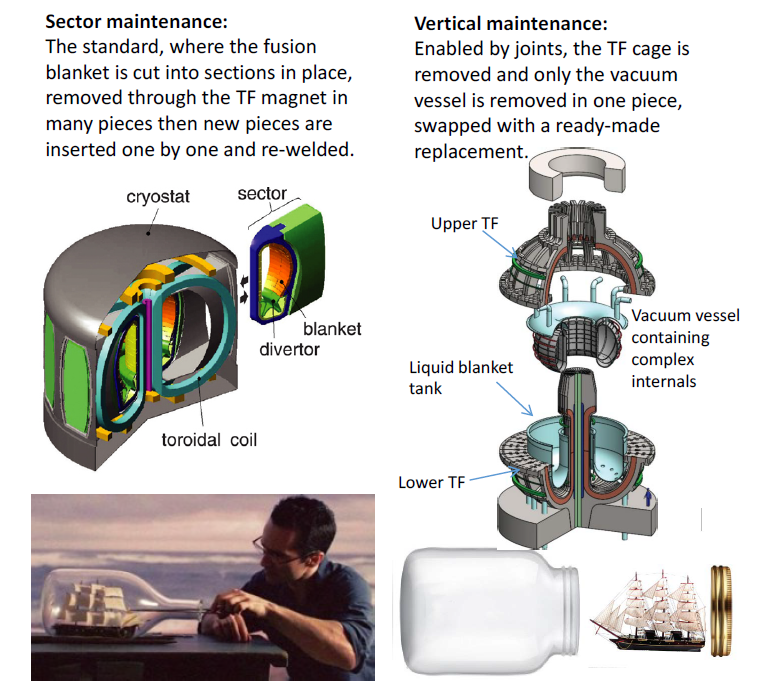Compact Tokamaks

Two of the large private fusion companies are designing and building compact tokamaks with confinement magnets using high temperature superconductors (HTS) which would be improvements on the mainstream fusion technology of conventional tokamaks.
Commonwealth Fusion Systems
Commonwealth Fusion Systems (CFS) is the largest private fusion company with $2+ billion funding and 300+ employees, is building a compact tokamak using HTS. Their approach benefits from the experience of mainstream fusion, adding innovations which could well solve many of the difficulties.
The design is described in the paper: ARC: A compact, high-field, fusion nuclear science facility and demonstration power plant with demountable magnets. The ARC reactor will be a tokamak reactor and produce about 200 MW of electricity. The machine will have rare earth barium copper oxide (REBCO) superconducting toroidal field coils, which have joints to enable disassembly. ARC will be about half the physical size of ITER but with comparable fusion power. A further innovation of ARC compared to ITER, is the breeder blanket which will be outside the vacuum vessel. This fully liquid blanket is a molten salt where the liquid is a continuously recycled, offering significant improvement on the tritium breeder ratio compared to other designs. Figure 3 shows the ARC design.

Figure 3. The Affordable, Robust, Compact (ARC) reactor.
The scientist involved have some very convincing graphics to make the case for their tokamak design. Figure 4 illustrates the unrealistic size of the EU-DEMO mainstream tokamak power plant which would produce 500 MW of electricity compared with the CFS ARC which would produce 200 MW.

Figure 4. The CFS, High-Field Path to fusion energy, from presentation of J. V. Minervini.
The joints in the magnet allow a vastly easier maintenance and component replacement regime compared to the EU-DEMO plans. This innovation, combined with the smaller size could enable a much faster and less costly development cycle. Figure 5 dramatically illustrates the massive maintenance problem for EU-DEMO compared to the vastly simpler, and more realistic, maintenance approach enabled with the dis-mountable magnet joints.

Figure 5. Illustration of the vastly more realistic maintenance scheme of ARC compared to the mainstream fusion tokamak designs, from Greenwald et al., The High-Field Path to Practical Fusion Energy
CFS reports plans for a first smaller reactor, SPARC, operational in 2025 and the full ARC in the early 2030s. The use of D-T fuel means that ARC will have initial tritium supply problems, as all other fusion reactors operating after 2030, although this is denied in the CFS publicity.
Energy Singularity
Energy Singularity is the second private company planning to build a compact tokamak. The company is based in China and was formed in 2021. It has declared funding of $112 million in 2023 and 80 employees.
Beyond the use of REBCO superconductor the website gives few technical details.